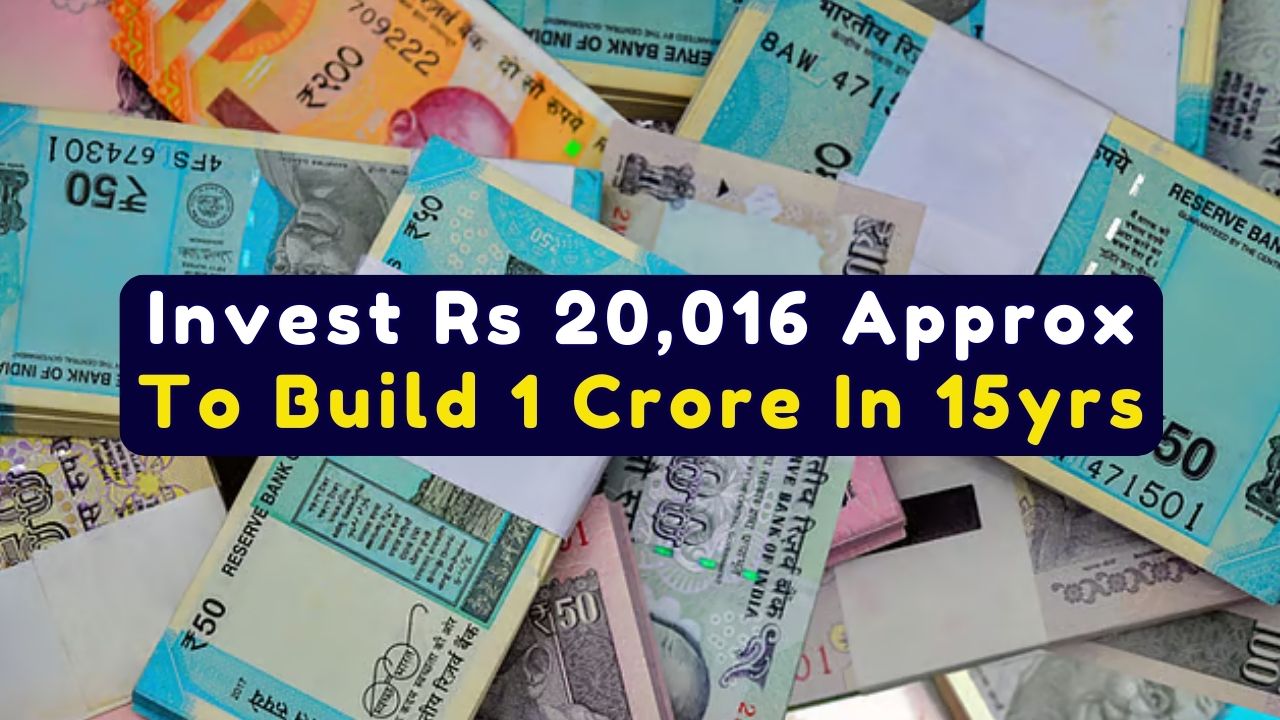For decades, Indian investors relied on fixed deposits, public provident funds and traditional savings schemes as their primary options for long term wealth creation. While these instruments still offer stability, they often fall short in delivering inflation beating returns. As a result, more investors are now turning toward mutual funds, particularly Systematic Investment Plans, to build wealth in a structured, disciplined and flexible manner.
SIPs allow you to invest small amounts periodically and benefit from market linked growth over the long term. Whether the goal is retirement planning, children’s education or financial independence, SIPs have emerged as one of the most effective tools for building substantial wealth.
This article explains how much you need to invest monthly to accumulate Rs 1 crore in 15 years, why SIPs are gaining rapid popularity and how the power of compounding plays a transformative role in long term investing.
Why SIPs Are Becoming The First Choice For Investors
SIPs allow investors to build wealth gradually without needing a large upfront amount. Several factors make SIPs highly attractive:
1. Start Small, Grow Big
Even a small monthly investment can lead to significant wealth creation if continued consistently over many years.
2. Power of Compounding
Returns generated on your investment start generating their own returns. Over time, this snowball effect accelerates your wealth growth dramatically.
3. Rupee Cost Averaging
By investing every month, investors buy more units when the market dips and fewer when it rises, reducing the impact of volatility.
4. Disciplined and Automated Investing
SIPs create healthy financial habits and eliminate emotional decision making, making investing easier and more systematic.
5. Higher Potential Returns
Compared to traditional savings instruments, equity based SIPs have historically delivered higher long term returns.
Short Summary
Key Point |
Details |
|---|---|
Investment Goal |
Build Rs 1 crore through SIPs |
Time Horizon |
15 years |
Required Monthly SIP at 9 percent Return |
Approx. Rs 26,426 |
Required Monthly SIP at 10 percent Return |
Approx. Rs 24,127 |
Required Monthly SIP at 11 percent Return |
Approx. Rs 21,993 |
Required Monthly SIP at 12 percent Return |
Approx. Rs 20,016 |
Short Term Goal (Rs 1 crore in 5 years) |
Monthly SIP between Rs 1.14 lakh and Rs 1.39 lakh |
Key Strategy |
Start early, invest consistently and allow compounding to work |
Wealth Growth Rule |
15x15x15 rule shows Rs 15,000 SIP at 15 percent return can become Rs 1 crore in 15 years |
Official Site Link |
SEBI Mutual Fund Resources: www.sebi.gov.in |
How Much SIP Is Needed To Build Rs 1 Crore In 15 Years?
The amount you need to invest depends on the expected rate of return. Higher returns reduce the required monthly SIP, while lower returns require larger contributions.
Below are the approximate monthly SIP amounts needed at different annual return rates:
1. At 9 percent Annual Return
- Required SIP: Rs 26,426 per month
2. At 10 percent Annual Return
- Required SIP: Rs 24,127 per month
3. At 11 percent Annual Return
- Required SIP: Rs 21,993 per month
4. At 12 percent Annual Return
- Required SIP: Rs 20,016 per month
This clearly shows that even a small difference in returns has a large impact on your total investment requirement. Choosing the right mix of equity and debt funds, based on risk appetite, can help optimise these returns.
What If You Want Rs 1 Crore In Just 5 Years?
Short term wealth creation requires significantly larger investments due to the limited impact of compounding.
At lower returns, the monthly SIP becomes extremely high:
1. At 7 percent Annual Return
- Required SIP: Approximately Rs 1.39 lakh per month
2. At 12 percent Annual Return
- Required SIP: Approximately Rs 1.14 lakh per month
This comparison highlights a crucial reality: wealth creation needs time. Attempting to accumulate a large corpus quickly puts enormous financial burden on the investor.
Longer investment horizons not only reduce the monthly SIP requirement but also allow compounding to deliver exponential growth.
How The Power Of Compounding Creates Massive Wealth
Compounding is the process where your returns start earning additional returns. In mutual funds, this effect becomes dramatically powerful over longer periods.
A well known example is the 15x15x15 rule:
- Invest Rs 15,000 per month
- At 15 percent annual return
- For 15 years
- Final Corpus: Approximately Rs 1 crore
Here is the surprising part:
If you do not touch this money and continue the SIP for another 15 years under the same growth rate, the corpus can grow to around Rs 10 crore.
This demonstrates that time is the most crucial element in wealth creation. The longer your investment horizon, the stronger the compounding effect.
Key Lessons For SIP Investors
- Start Early
Even a few years can make a huge difference in total wealth accumulation. - Stay Consistent
Skipping SIPs or stopping investments reduces the compounding effect. - Increase SIP Annually
A small step up in SIP every year helps you beat inflation and accelerate growth. - Choose Funds Wisely
Equity SIPs are recommended for long term goals, while debt and hybrid funds suit conservative investors. - Avoid Timing The Market
Consistent investing through SIPs automatically smoothens out volatility.
Frequently Asked Questions
1. Is a Rs 1 crore target realistic with SIPs?
Yes. With a 15 year time frame and the right SIP amount based on expected returns, accumulating Rs 1 crore is highly achievable.
2. Which type of mutual fund is best for long term SIPs?
Equity mutual funds offer the highest long term return potential and are generally preferred for goals with horizons of 10 years or more.
3. Can I increase my SIP amount over time?
Yes. Step up SIPs allow you to increase the investment amount annually to keep pace with income growth and inflation.
4. What happens if markets fall during my SIP period?
Falling markets are beneficial for SIP investors because they accumulate more units at lower prices, increasing long term returns.
5. Where can I find official guidance on mutual fund regulations?
You can visit the official SEBI website for verified information on mutual fund rules, investor protection guidelines and compliance requirements.
For More Information Click HERE







